Traveling the world with me for 119 days with World Cruise 2019 pt.2
Days 60, 61 - 03-04.03.2019 - Western Samoa
Last night, when I received the daily program for the next day, I decided that there was a mistake - the date is March 4, instead of the 3rd /our national holiday/. To my great surprise, it turned out that there is no mistake, and because of the crossing of the zero meridian we are 25 hours ahead in time?!?!?!? and hop - it's March 4th. You see, I didn't even think this could happen to me?!?!? How is it possible for the crossing of this mental line of the globe to cause such a thing - we are back an hour /tonight we will return the clock by 1 hour, and so the difference with Bulgaria becomes 14 hours, and the day is ahead of the one in Sofia by 12 h.?!?!?/ I wonder! I may not understand it correctly, but the facts are as follows. Still, it was good that I thought about it last night, otherwise I would have missed the whole day and I would not have added more impressions of another island. At the reception I received assistance for some administrative procedures and here I am on my way to Apia - the capital of Western Samoa.
The city is slightly closer in my notions of such - a government building, a bank, a hospital, hotels, the Ministry of Social Care, or as it is called there/. You can't even talk about a beach - the shore is very rocky, I didn't even see sand in front of the Sheraton Hotel. The surf is quite deep in the ocean. The houses are again wooden and "pile", apparently in this area it is a practice, with lush greenery, palm trees, shrubs and flowers. Next to them we again find graves of the deceased relatives /local tradition/. Many, many churches, 98% of the population are Christians, but from different currents, Islam and Baha'i complement the religious community. As on other islands, Sunday is the day of the church and family.
We first visited the local Immaculate Conception Cathedral Apia, built in 1875 and in its current form since 2014. The renovation strictly followed the Catholic architectural solutions, but they also added something typical local - the wooden ceiling.
A perfect addition, without contradicting each other, beautiful stained glass windows, wide open doors create such a flow that they can blow you away! There was simply nowhere to hide, but at these high temperatures, that's perfectly understandable.
On the square around the center, the road is being repaired and this requires spraying with a water carrier to raise ash.
Near it is built a cultural complex Samoa Culture Center /whether this is the correct name, I'm not sure/, which practices /whether?/ and demonstrates local crafts /or is only for tourists?/. Here I saw how the women /near them a baby sleeps under a canopy ???/ paint on parchment /canvas or other fabric typical paintings, men tattoo the willing/ much later the Romanian - about whom I told before, shared that he spent all the time to tattoo it and it was especially painful !!! But why did you undergo such a procedure, I ask him, and he answered that he could not experience such a thing anywhere else?!?!? Let him not know both the tradition and the miracle !!! And then, when you get bored, will you endure the pain of removing it again ??? I don't even think to try it, although women do it too. Psychologists claim that tattoos, piercings, as well as other modern ways of "beautification" (excluding local traditions) are a kind of self-aggression and are caused by some personality deficits (sounds scientific, doesn't it?). They showed us again how to prepare their food - the same method we saw in American Samoa, songs and dances of their folklore. The same frugal movements and steps, chants and many, many smiles. At one end of the complex there was a ceremony (probably religious), which we were kindly not allowed to visit. That's right, some things are not an attraction for tourists and require proper behavior!
The extensive park is delightful, freshly cut grass, lots of shrubs and flowers. The locals loved and respected the writer and therefore kept the museum in perfect condition.
I quickly shopped for my relatives and friends some gifts and took shelter in the coolness of the ship. What a grace after the heat outside, quite exotic, but even this is hard to bear in the heat.
The end of the day took place /as usual/in the theater with the performance of the man-orchestra/ I did not write down his name / - quite an extravagant singer from Chile, whose repertoire is borrowed from T. Jones, E. Presley and other celebrities, but is pleasant to listen to - gentle and melodic. What more could you want?!?!?
Day 62 - March 5, 2019 - in the ocean
Another day to relax from the accumulated impressions and emotions. The ocean is quite stormy and immediately the blue bags in the foyers appeared ...
It seems that the contract between Joe Magic and company has expired, because the preparations for the carnival were made by the entertainment team. For myself I chose to make a crown out of stretch paper /I had forgotten that they are still used today !!!/. It became quite successful, it is a pity that I will not take it as a souvenir, because of the large amount of luggage!?!?!
The educational lecture was on the Kingdom of Tonga, which we are about to visit. Curiously in its history, it has never been someone's colony, which is not typical of the area. To this day, it is ruled by a king who is very, very rich, while ordinary people are poor. The island is often hit by various natural disasters - earthquakes /as a result of which new islands and atolls appear, disappearing, mostly uninhabited/, tsunamis, tropical storms, typhoons. I hope they do not catch up with us on the day of our visit.
Day 63 - March 6, 2019 - Tonga - the capital of Nuku-alofa
At the gate we are greeted by young people dressed in traditional costumes, necessarily with garlands of fresh flowers.As I have shared before, the kingdom has never been someone's colony /so the locals claim, while Google says otherwise?!?!?/, which the locals are very proud of. At the head of the constitutional monarchy is a king, whose succession is inherited. When the king died, the royal family spent a whole year in mourning, and ordinary people - 1 month. Royal Tombs is designated for the deceased king, which is a local landmark, a must-visit for tourists.
Unlike the previous islands, here the terrain is almost flat, in this part we visited. The main part of the population are poor farmers, with a complex ancestral structure of land inheritance. Dill, bananas, coconuts, taro, cassava are grown and exported. The life of ordinary people is difficult, they live in wooden houses on stilts because of the frequent natural disasters. During the rainy season /December-April/ fierce tropical storms, cyclones, typhoons swirl and this explains the special homes.
In February 2018, such a cyclone devastated the island, we saw the damage that has not yet been removed. For a long time after that, students studied in tents, this should also know our spoiled teenagers. Only taller buildings are those of the royal palace, banks and the treasury. A local airport, a ferry to connect with the more remote islands of the archipelago complete the overall picture of the island's infrastructure. Again the local tradition of dying to be buried in the yards struck me.
Many, many churches, schools have been built next to them. I was amazed by the education in the primary grades - in general, in a large room, mixed by children in different age, and in the upper grades the division is into girls and boys. Compulsory education is up to 14 years. I will show the photos taken about the conditions under which the children of their relatives study, to see the conditions and to draw conclusions about our advantages.
Uniforms are mandatory, as on other islands, and no one grumbles when they wear them, on the contrary - they are proud of them. As a rule, only men work /in the school we passed, the teachers were women, ie. every rule has its exceptions/, and women take care of the household and children. And here S unday is set aside for the church and the family, only the police and the health authorities work.
Blowholes is the local landmark, a natural wonder created over the centuries by volcanic rocks shaped like terraces and the ocean waves that have pierced them over time. The oncoming waves fall into these holes, and drain in the form of tall fountains, the locals even call them geysers, sometimes reaching 30 meters in height /especially when there is a high tide/, we were satisfied with only a dozen. What a natural force, what a power, what an amazing view all along this part of the island! This is what I dreamed to see and feel, it was very exciting, I will never stop admiring the greatest artist in the world - nature !!!
On the way to Otuhaka Beach we passed through Kolovai Village, famous mostly for its colony of flying foxes - Flying fox. This is a local endemic mammal, a species of small bat. Like them, they are active at night when hunting for food, and during the day they sleep with their heads hanging from the branches and only make squeaking, screaming sounds like mice. Quite strange, but interesting. The beach is covered with the familiar yellow sand, but the ocean floor is so rocky that even with special shoes it is difficult to bathe. Its length is about 1 km and width is about 20-30 m. While the others were diving and paddling, I went for a walk, took pictures and managed to collect mussels, shells and corals / is it? /.
The curious thing about this tour was our transportation with buses donated by China and used for school transportation /we all know how tall the Chinese are, not to mention their students?!?!?/ - narrow and uncomfortable for Europeans and Americans, especially. My neighbor in a seat (Hungarian) and I commented quite critically on what we saw during the day - the overweight of the locals, folklore and dance, poverty, the shortcomings of the public beach, the bus itself, ie. everything that stung the eyes of the European (later - in India, again found themselves in a similar, much more drastic environment - misery, dirt, cows and other animals on the street, etc.).
Day 64 - March 7, 2019 - in the ocean
Today at 5.15 pm we crossed the Greenwich meridian, and in the morning - at 5.50 am I met the suThe day in the ocean follows the tried and tested order - lessons - singing, and now I plan to start with dancing, educational lecture, there are no deputies of the team for "manual" work /I miss these activities/, kindle, crossword puzzles and of course - a concert.
The tenor's afternoon /I have not yet established the nationality/, unfortunately I did not hear the aria of Cavaradossi from "Tosca", which I was expecting, but this performance also gave me great pleasure. Orchestra man Salvatore Hazard had added drums to the other instruments. I haven't heard any original songs, only those from the repertoire of Lionel Richie, Phil Collins, Michael Jackson, Barry White, but they also do very well /maybe it's profitable .../
Day 65 - March 8, 2019 - Suva /the capital of Fiji/
Suva did not greet us kindly - it was raining like a bucket, nothing could be seen 10 meters ahead, heavy, lead-gray storm clouds. Eerie and stunning view! I filmed the flow of water over the city and the bay. Won't this storm delay our tour?
If I have to be completely honest, and why not, I'm not writing a brochure, I'm puzzled to say the least, not to use a stronger word than the capital. This opinion was formed in me from the islands visited so far from French Polynesia, which are recommended destinations for newlyweds. To cross half the world and time zones, to pay car money for plane tickets, transfers, hotels, to see islands that go around in half a day ??? The only extra is the wonderful nature - lush greenery, enchanting colors, shapes and aromas, diving and spearfishing, surfing, kiting and other sports, and of course - enough money, yes, I agree. I saw so much poverty and misery, mud and dust, that this "exotic" almost brought me severe depression. Good thing I'm far away and for a while! And how do these people live in such conditions, but they have not seen anything else, they do not have internet in the holiday village, and they do not know another life. I felt this later in other places, so the main conclusion of this trip is that there is no better place to live in this world, except Bulgaria and Europe /at least for me!/ !!! Even the local guides kept telling us about the expensiveness in this region, the difficult way of life and the restrictions, in some of them education and healthcare are free, but only to a certain extent. Here especially the monthly salary is 57 dollars?!?!? How do people survive with these funds ??? Most of the locals do not own cars, but on the other hand the public transport is well developed with the already known open-air buses /from which we Europeans are constantly coughing and sneezing due to the strong current/, in this heat this is most acceptable.
The city seemed fragmented to me - neighborhoods /neighborhoods strewn on the hills, I did not see formed streets, not to mention sidewalks - they are only in the center around government buildings, wooden and pile dwellings/ because of the climate and rain, tin roofs, peeled, shabby, full of laundry ropes swing smoothly, puddles or dust depending on the season, etc. From the moisture, everything looks blackened and faded, but with this income, nothing else can be expected. Abandoned and abandoned houses are no exception. Isn't this Greece for you - to paint the houses every year before the season?!?!? Good thing there is lush vegetation that hides part of the unpleasant view! Only the center and the space around the gate look more acceptable /in my eyes/, obviously the tourists should not be very disappointed /like me, for example!/.Only the government and presidential buildings, as well as those of the embassies and the army, look different.
And again, many churches - for different religions - Methodists, Buddhism, Islam, Mormons, Catholics. I noticed some of them and specialized schools.
These pfotos are from government residence and his guard.
I keep failing to point out that the traffic is on the left - as in England, the two main roads in Suva are named after Elizabeth and Philip, who visited the island after their wedding and are thus immortalized in history.
The discoverer of the island is considered to be Abel Tasman in the middle of the 17th century. He was also visited by James Cook, John Blade /who brought the bread tree from Haiti/, Magellan and others sailors at the time of the Great Geographical Discoveries /who is more interested in history, etc. details, you can refer to Wikipedia/.
Many different trees /normally, in this climate!/ - mangrove, mango, banana, bread, cane and its distillation make it a major source of income on the island, coconut palms, from which dill is extracted and exported. The ocean also helps the budget - with lots of fish, their catching and processing. But, of course, the most important thing is tourism, from which many people here make a living. Education starts at the age of 4 and is compulsory until the age of 14. High schools end with 13th grade, those wishing to study medicine and law - pay, the other specialties are free. Many young people continue their education in New Zealand, which is only 1000 km away. distance /one throw space, right?/. Single mothers receive $ 65 a month (whether Fijian or American, I din't understand), for other aspects of the tax and social field, the guide did not mention anything. We passed through Laucala Bay, behind which was built the University of the South Pacific and the stadium to it, where rugby is practiced, the favorite sport among the locals. The shipwrecked man with Tom Hanks and The Beach with Leonardo DiCaprio were photographed here. Did they saw the same like my, or did they take them by boat to and from the hotel? Because they couldn't miss them by car?
As some of us were interested in cannibalism, the guide explained that this has been no longer practiced (perhaps by the population of the island from other cultures). This was done after battles, with the locals winning their defeated enemies with the idea of gaining their strength and soul, as was customary on other islands in the region.
The last site to visit for the day was the National Museum. The collection is simple, but eloquent enough for the local way of life and culture over time. Once again, I am convinced that for the average person, survival has always and everywhere required a lot of effort and constant work. That hasn't changed yet!
Do not miss the party on the occasion of March 8, which, like all others, took place on the open deck on the 13th floor. The music of several ensembles /each of them usually played in the different foyers on the floors/, the passengers showed what they learned in the lessons of samba, bachata, salsa and others. There was again a rich buffet /after dinner where do these delicacies fit ???/, one rose for each woman /from stretch paper, of course/, cocktails /I congratulated myself on the holiday with one of them/.
Day 66 - March 9, 2019 - Lautoka / Fiji /
This was followed by a visit to Naouaca - a local village consisting of about a hundred houses, where we were greeted with a special kawa-ceremony. On the way we were stopped by a group of young people in traditional clothes and weapons, who stormed the bus with terrible battle cries. It turned out that these were welcoming shouts !!!, and I accepted them as a signal to start a battle and take hostages?!?!? /we are so scared of terrorists that even this friendly welcome stunned us !!!!!/
This part of the South Island is a place for many extreme and crazy adventures for people from all over the world /i heard a Russian speech at airport/. Wonderful conditions and organization have been created for their smooth implementation, of course for a decent fee. Highly qualified and experienced drivers, equipment and machinery of the highest class, removal of high-risk obstacles - all this costs money, and their investment in these endeavors is never forgotten.

- Dinner at the restaurant shocked me with countless offers and oriental extravagance, mainly with local food, but there were also those for other tastes. Local and vegetarian dishes / mainly rice and noodles with different sauces /, salads, seafood / still the ocean is at hand, right? /, Desserts, fruits, ice cream. Admittedly - I shot more than I ate, so beautifully arranged that you would be sorry to spoil the composition. Smiling hosts, willing to offer you to try the dishes prepared on the spot, spicy smells spread around and irritate the sense of smell and curiosity. I did not give in to them, I chose noodles with shrimp, sprouts and vegetables, and the desserts I tried were mainly based on gelatin.
The interesting thing is ahead in the temple complex and a functioning monastery / if this is the correct definition of the Thai language /. It consists of several pagodas, another - under construction, in the distance you can see the Big Buddha / 45-meter marble statue, erected in gratitude by the population for saving the island from the devastating earthquake and tsunami in 2004 /.
The pagodas are richly decorated, with lots of greenery and flowers, scented candles and many worshipers. And no one looks at the curious tourists, everyone is immersed in prayers and rituals. Suddenly there are thunders / I, maybe others like me were scared with the most disturbing thoughts in our heads !!! /, it turned out to be a ritual in special furnaces, where grateful / or praying for support and help locals throw special mixtures, with which they pay homage to their deities. Here, too, the lack of time is crucial so that you do not get to know in detail everything around us, but even this is enough to get a general idea of religious traditions and customs.
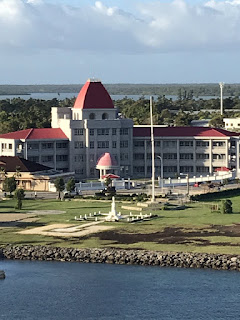



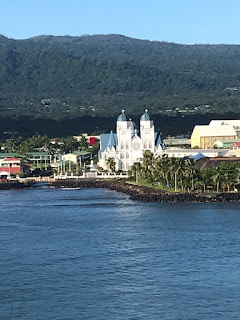














































































































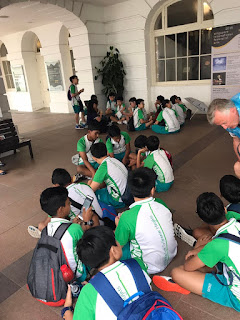



































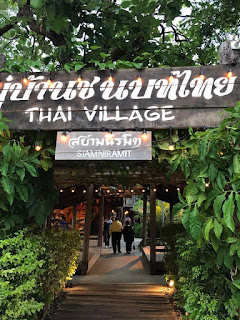

























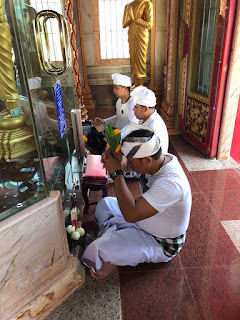

































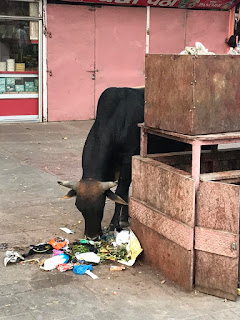















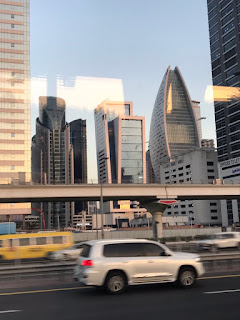





























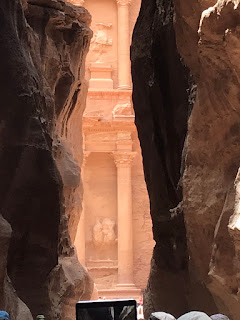































Comments
Post a Comment